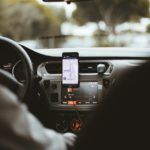 For some time, drivers have complained that the income they receive from Uber has been insufficient to live off, especially in major cities. A new practice among drivers to boost their income has been to go offline collectively, which was found to almost double fares within minutes.
For some time, drivers have complained that the income they receive from Uber has been insufficient to live off, especially in major cities. A new practice among drivers to boost their income has been to go offline collectively, which was found to almost double fares within minutes.
New research from TU Dresden explores how this strategy works. The joint strategy aims to bring the market into balance, as if demand exceeds availability, travel costs will rise. So the idea is to attract more drivers to meet the surge in demand, while customers would be incentivized to wait. This is the process the drivers are trying to activate themselves.
“If many drivers go offline at the same time, the algorithm ‘thinks’ there is a shortage of drivers,” the researchers explain. “It tries to attract more drivers by increasing the price: A flexible surcharge is added to the basic price for the service, which can double or even triple its cost.”
Profitable strategy
The researchers use game theory to explore when such a strategy would be profitable for drivers. The first condition that must be met is that there must be a high level of demand. If this isn’t the case then there is the possibility that the drivers won’t be able to find passengers during their offline period. What’s more, there has to be sufficient willingness among passengers to pay the inflated fee rather than take an alternative, such as a taxi or public transport.
“For the drivers, these are empirical values,” the researchers explain. “They have learned over time when the planes arrive with stressed business people whose journey is paid for by their employers anyway.”
Suffice to say, the tactic is also only viable if the other drivers are in on it and also go offline. If just one driver goes offline then they simply run the risk of missing out on customers. This requires drivers to trust their peers or otherwise make some kind of arrangement. For instance, the researchers explain that in Washington, the drivers know one another and wait in the same car park, which makes communication and coordination much easier.
The researchers developed a model that allows for the identification of this offline tactic based upon the price trends that are visible, without needing to know the availability of cars in relation to demand. They tested the model with price data from 59 cities around the world, with similarities found to the Washington case study in cities across Asia, Europe, and the US. These tended to be in areas such as airports, conference centers, and train stations and would result in a surcharge in prices of up to ten dollars.
“This is the most inefficient way to prevent increases in prices,” the researchers explain. “The trip will cost a maximum of ten dollars more, but this does not change the general incentives or the behavior of the drivers.”
It’s a topic that the researchers plan to continue studying as the market is nothing if not constantly evolving. In the meantime, it might be worthwhile passengers delaying their journey a bit if they find prices are incredibly expensive. The chances are, they’ll return to normal again before long.